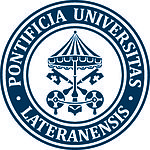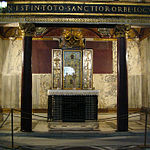Diocese of Rome

The Diocese of Rome (Latin: Dioecesis Urbis seu Romana; Italian: Diocesi di Roma) is the ecclesiastical district under the direct jurisdiction of the Pope, who is Bishop of Rome and hence the supreme pontiff and head of the worldwide Catholic Church. As the Holy See, the papacy is a sovereign entity with diplomatic relations, and civil jurisdiction over the Vatican City State located geographically within Rome. The Diocese of Rome is the metropolitan diocese of the Province of Rome, an ecclesiastical province in Italy. The first bishop of Rome was Saint Peter in the first century. The incumbent since 13 March 2013 is Pope Francis. Historically, many Rome-born men, as well as others born elsewhere on the Italian Peninsula have served as bishops of Rome. Since 1900, however, there has been only one Rome-born bishop of Rome, Pius XII (1939–1958). In addition, throughout history non-Italians have served as bishops of Rome, beginning with the first of them according to Catholic tradition, Saint Peter. It is the metropolitan archdiocese of the Roman ecclesiastical province and primatial see of Italy. The cathedral is the Archbasilica of Saint John Lateran. The primate of Italy is the pope, holding primacy of honor over the Italian sees and also primacy of jurisdiction over all other episcopal sees by Catholic tradition.
Excerpt from the Wikipedia article Diocese of Rome (License: CC BY-SA 3.0, Authors, Images).Diocese of Rome
Piazza di Porta San Giovanni, Rome Municipio Roma I
Geographical coordinates (GPS) Address Nearby Places Show on map
Geographical coordinates (GPS)
| Latitude | Longitude |
|---|---|
| N 41.885905555556 ° | E 12.506155555556 ° |
Address
Basilica di San Giovanni in Laterano
Piazza di Porta San Giovanni
00183 Rome, Municipio Roma I
Lazio, Italy
Open on Google Maps










